Penghu County on Tuesday took a major step toward becoming a “low-carbon island” with the inauguration of a smart micro-power grid in Cimei Township (七美) that identifies the optimal mix of solar, wind and diesel-powered energy and generates electricity accordingly.
Part of the second phase of the Ministry of Science and Technology’s and state-run Taiwan Power Co’s (Taipower) National Energy Program, the power grid followed a phase-one photovoltaic system — which can generate up to 155 kilowatt-peak (kWp) of power — providing an additional 200kWp of power and an energy storage system that has 300 kilowatt-hours (kWh) of installed capacity.
The green power generation modules run in tandem with diesel generators in the township, forming an integral power grid.
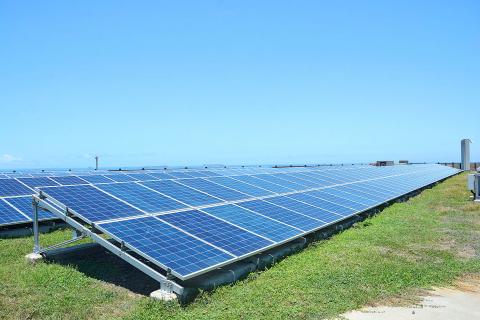
Photo: CNA
The micro-power grid, based in Cimei Green Energy Park, would serve the goal of maximizing the output of green energy in the township, project director Chen Chao-shun (陳朝順) said, adding that alternating between solar, wind and diesel power enables the facility to overcome the sporadic nature of renewable energy sources.
Taipower expects to complete next year the construction of wind turbines with an installed capacity of 600kWh and expand the capacity of photovoltaics and the energy storage system by 1,200kWp and 2,000kWh respectively, which is expected to increase the yearly amount of renewable energy generated in the township to 3.37 million kilowatt-hours and cut costs from diesel power generation by NT$50 million (US$1.67 million).
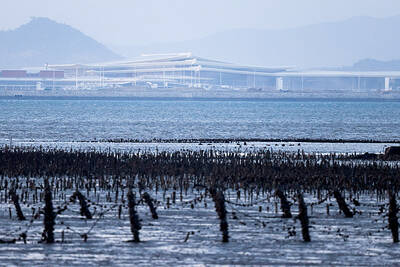
UNILATERAL MOVES: Officials have raised concerns that Beijing could try to exert economic control over Kinmen in a key development plan next year The Civil Aviation Administration (CAA) yesterday said that China has so far failed to provide any information about a new airport expected to open next year that is less than 10km from a Taiwanese airport, raising flight safety concerns. Xiamen Xiangan International Airport is only about 3km at its closest point from the islands in Kinmen County — the scene of on-off fighting during the Cold War — and construction work can be seen and heard clearly from the Taiwan side. In a written statement sent to Reuters, the CAA said that airports close to each other need detailed advanced
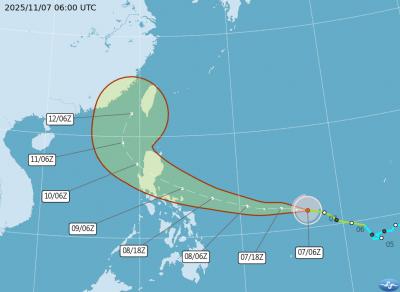
Tropical Storm Fung-Wong would likely strengthen into a typhoon later today as it continues moving westward across the Pacific before heading in Taiwan’s direction next week, the Central Weather Administration (CWA) said. As of 8am, Fung-Wong was about 2,190km east-southeast of Cape Oluanpi (鵝鑾鼻), Taiwan’s southernmost point, moving westward at 25kph and possibly accelerating to 31kph, CWA data showed. The tropical storm is currently over waters east of the Philippines and still far from Taiwan, CWA forecaster Tseng Chao-cheng (曾昭誠) said, adding that it could likely strengthen into a typhoon later in the day. It is forecast to reach the South China Sea
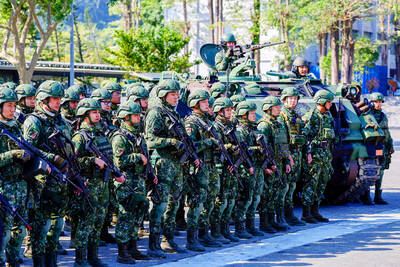
Almost a quarter of volunteer soldiers who signed up from 2021 to last year have sought early discharge, the Legislative Yuan’s Budget Center said in a report. The report said that 12,884 of 52,674 people who volunteered in the period had sought an early exit from the military, returning NT$895.96 million (US$28.86 million) to the government. In 2021, there was a 105.34 percent rise in the volunteer recruitment rate, but the number has steadily declined since then, missing recruitment targets, the Chinese-language United Daily News said, citing the report. In 2021, only 521 volunteers dropped out of the military, the report said, citing
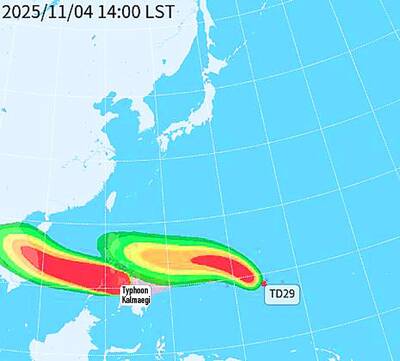
WEATHER Typhoon forming: CWA A tropical depression is expected to form into a typhoon as early as today, the Central Weather Administration (CWA) said yesterday, adding that the storm’s path remains uncertain. Before the weekend, it would move toward the Philippines, the agency said. Some time around Monday next week, it might reach a turning point, either veering north toward waters east of Taiwan or continuing westward across the Philippines, the CWA said. Meanwhile, the eye of Typhoon Kalmaegi was 1,310km south-southeast of Oluanpi (鵝鑾鼻), Taiwan’s southernmost point, as of 2am yesterday, it said. The storm is forecast to move through central